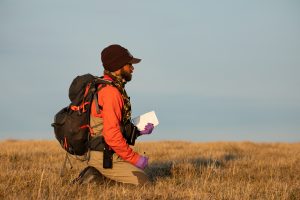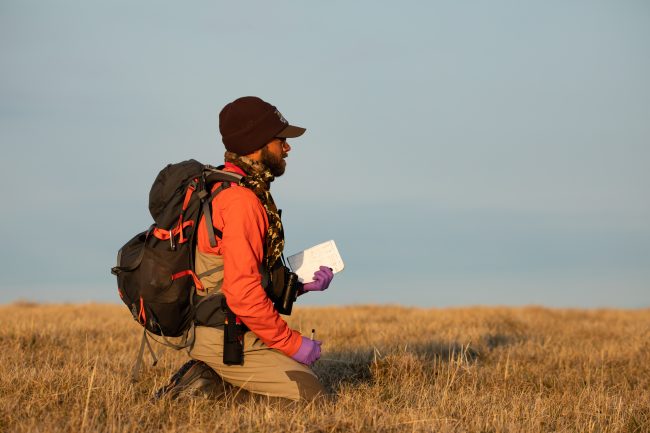by David Raskin, Friends Board President
Kenai Regulations
Over 34,000 public comments were submitted to the Fish and Wildlife Service (FWS) during the initial comment period, in addition to tens of thousands of petitions submitted in opposition to the proposed rule. After overwhelming opposition to the proposed rule and requests by our coalition to reopen the comment period and hold public hearings. FWS added an additional 30 day comment period which ended November 9 and scheduled three virtual hearings on Oct. 26-28. In the first two hearings, 64 people testified against the new rule, including many Alaskans who live near and use Kenai Refuge for recreation. Only four people spoke in support of the proposed rule, which included two Safari Club representatives and a state official. After two days of overwhelming opposition to the proposed rule, officials in Washington, DC ordered the cancelation of the third scheduled hearing, which left many opponents of the proposed regulation unable to testify. We understand that Washington officials are concerned about being able to complete their analysis of this massive number of comments in time to push through the regulations prior to a change in administration. To learn more visit our website.
Arctic National Wildlife Refuge We are still waiting to hear about the expected call of nominations for oil leases. The window is narrowing for this process to unfold before a new administration is installed in January.
Kaktovik Inupiat Corporation (KIC) has applied to conduct seismic exploration on a portion of the Coastal Plain this winter. They are contracting with SAExploration, the same company that was supposed to do the seismic work under KIC and Arctic Slope Regional Corporation’s 2018 seismic application. The original proposal was limited to ~90,000 acres of KIC/ASRC lands, but BLM recently posted the plan of operations and proposal on their website and it includes both the private KIC/ASRC lands and roughly 450,000 acres of federal lands on the Coastal Plain. The agency also announced a 14-day comment period that closed November 6, 2020.
https://eplanning.blm.gov/eplanning-ui/project/2003258/510
It’s important to note that this is just the BLM permit; there is an additional approval required from FWS related to polar bears and the Marine Mammal Protection Act that we have not seen yet.
The Arctic Refuge Defense Campaign’s, (ARDC) highly successful meetings with financial institutions concerning the dangers of Arctic drilling and the financial risks of supporting such efforts reached another milestone with the announcement by the Bank of Montreal, 8th largest bank in North America, that they will not fund drilling in the Arctic Refuge. This is another success that we hope will encourage other Canadian financial institutions to take this step to protect the Arctic and their people who depend on it for subsistence and traditional ways of life. ARDC has continued their pressure on Bank of America and oil and gas development companies to join the major financial institutions in refusing to fund oil development in the arctic.
Izembek National Wildlife Refuge The State of Alaska has officially applied to FWS to construct a road through the Refuge under the theory that they are entitled to access to inholdings under the Alaska National Interest Lands Conservation Act (ANILCA) 110(b). Applicants are the State, the Borough, and the City on behalf of the residents of King Cove. According to the application, the State will apply to the Army Corps in roughly 2 weeks for a Clean Water Act 404 permit and will seek other ANILCA temporary permits for site investigation. There are NEPA requirements and other ANILCA permitting requirements that apply to this process. Trustees for Alaska is closely monitoring this and will develop whatever is needed to respond to this latest insult to Izembek!
Pebble Mine The Pebble Partnership took a big hit following the disclosures of their behind-the -scenes antics that provoked the ire of Senator Sullivan and others. We hope that the Army Corps of Engineers will stick to their recent position that the Pebble Project failed to provide satisfactory mitigation plans for the proposed mine. The Corps gave the Pebble project 90 days to propose stream and wetland mitigation plans, but it seems unlikely that they will be able to put together such a plan in the next 60 days because of lack of options.
Mulchatna Caribou We have no update on the declining Mulchatna caribou herd that ranges over a huge area of Western Alaska and encompasses large portions of the Togiak and Yukon Delta Refuges. The State is asking to extend its current, unsuccessful predator control activities to lands within the refuges. However, this is not consistent with FWS management practices and is unlikely to achieve the State’s hopes of increasing the caribou population. Declines in the caribou numbers are most likely due to human predation and smaller impacts of habitat loss and other factors, and FWS is not likely to allow the State to kill predators on refuge lands. | 

